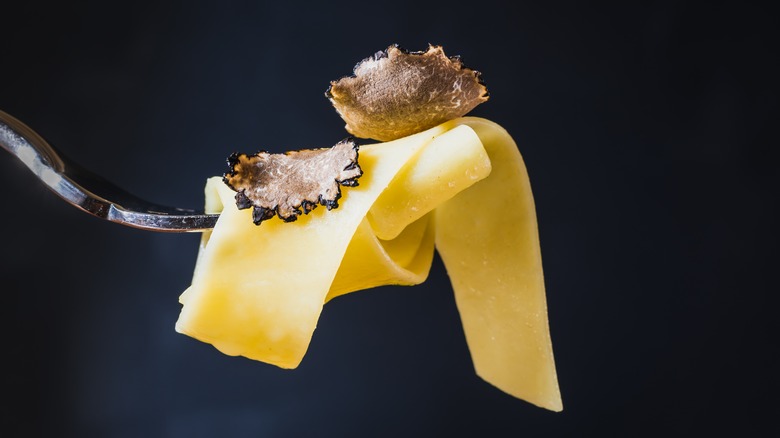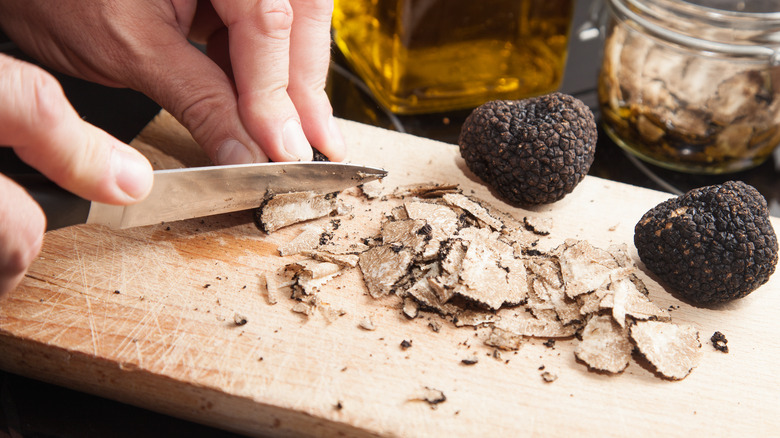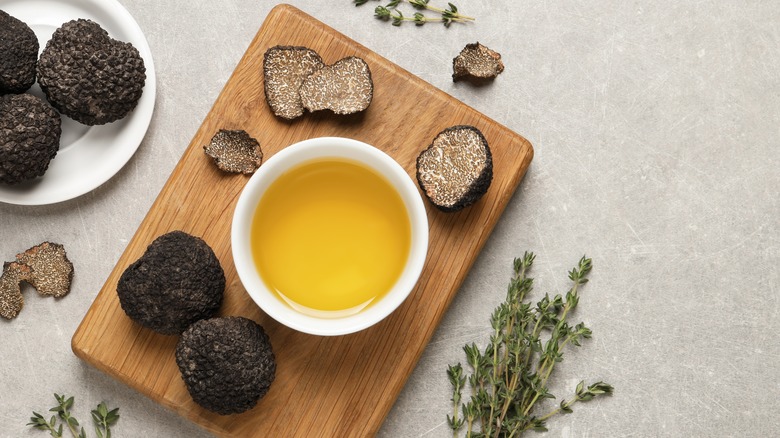Here's What You Need To Know About American Truffles
Oh, truffles. Those darlings of the culinary world are luxurious and pungent and usually associated with places like France and Italy. But we also grow and harvest truffles in the U.S. There are thousands of truffle species out there, including plenty that are native to the U.S. And in recent decades, hundreds of orchards have sprung up to cultivate truffles on a larger scale on our side of the pond.
Of all the truffle species that are available in America, only seven are prized for their culinary value. You can find four of them in the Pacific Northwest, one East of the Rockies, and two rare species in the South and the Northeast. And more recently, farmers are also working on growing elusive white truffles here, too.
Just like their European counterparts, the intricate taste and aroma of American truffles reflect their local ecosystems: the fauna that feast on them, the climate and the weather where they grow, along with the soil and the tree roots that host them, their age, and their species. There's nothing like the taste and smell of American truffles, and that's because they don't have to travel as far to get to our plates. They're fresher, and it makes a difference. Truffles lose their smell and taste quickly due to their shelf life, which is only about a week long. And while the truffle industry has figured out ways to preserve them during transport from Europe to the U.S., experiencing that shroomy divinity directly from its natural habitat and straight to your plate is the way to go.
We adore these American spores
The Pacific Northwest has been rooting for fresh, domestic truffles since the 1970s, cultivating them, selling them, and promoting their culinary value by using them in restaurants. They are known for growing four specific wild truffles: the Oregon black truffle (featuring bright aromas of tropical fruit), the Oregon brown truffle (packing a punch of garlicky Camembert on the nose), and two types of Oregon white truffles: Oregon winter white and Oregon spring white truffles (which are heavy on the umami). Any of them would sparkle on this truffle butter garlic bread.
Additionally, the U.S. is also home to the pecan truffle, routinely found in pecan orchards east of the Rocky Mountains. As you might expect, it tastes deliciously pungent in that shroomy way but uber nutty, and is relatively easy to procure. While not as commercially well-known as other varieties, they are worth keeping on your radar. Try pecan truffles shaved on top of these garlic mashed sweet potatoes and you'll never look back.
These fungi are hard to come by
We actually have two species of truffles in the United States that are considered rare, each in their own way. There's the Blue Ridge truffle, which has only been found in Japan and the Blue Ridge Mountains of North Carolina. Its flavor profile is rich and sharp, described as having notes of hazelnut with a parmesan-like tang. If you can get your hands on some, it could be fireworks on a sheet pan Sicilian pizza.
There's also the Appalachian truffle, aka the Michigan Truffle, another wild truffle found in the eastern U.S. It's buttery and garlicky, and a little cabbage-like, in a mushroomy way that somehow (by the magic of nature) works perfectly together. Scientists have discovered its flavor and aroma profiles include six unique chemical compounds not found in any other truffle in the world. That makes it uniquely American and one more reason our truffles are special and delicious.


